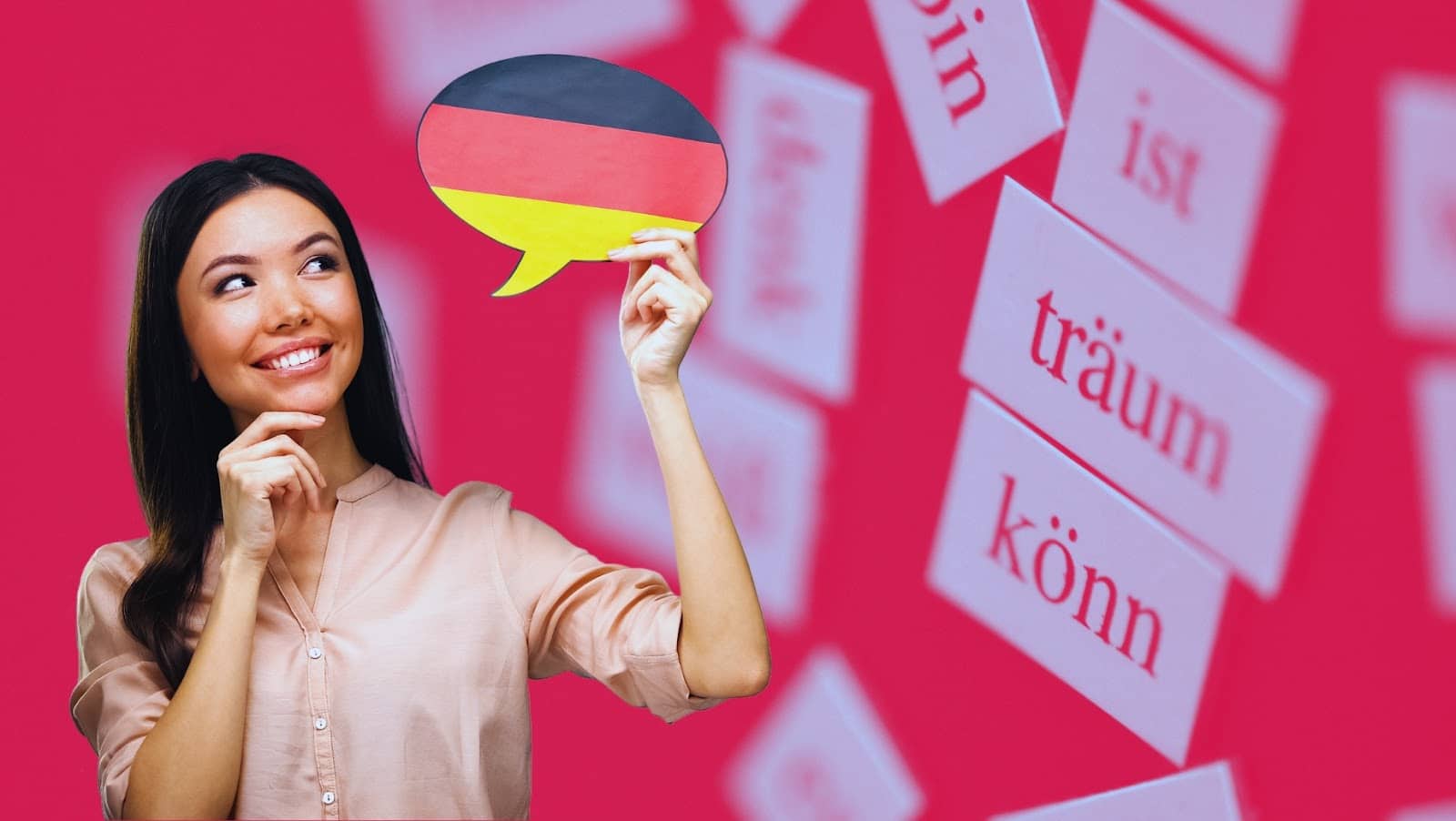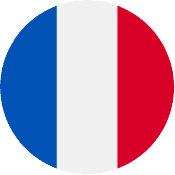
How to Improve Your German Pronunciation: Practical Tips and Tricks
Twisting your tongue into a pretzel while trying to say the German Zungenbrecher, “Fischers Fritz fischt frische Fische,” can feel like you’re speaking the alien language Klingon. In this particular case, the so-called “Zischlaute,” or sibilant sounds, present a unique obstacle to language learners, especially native English speakers. And these sounds are just the tip of the iceberg.
With its complex sounds and letter combinations, German pronunciation has certainly earned its reputation for challenging even the most diligent language learners. From the throaty R in standard German and the rolling R in the Bavarian dialect to the deceptive umlauts and hissing sounds like ch, there’s no shortage of linguistic hurdles to overcome.
But don’t let that discourage you. Whether you’re a language enthusiast learning German just for fun or a professional in need of business language training, this guide is here to demystify those challenges, offering practical tips to tackle the complexities of German pronunciation – one tongue twister at a time.

The German alphabet and its unique symbols
The German alphabet is quite similar to the English one, sharing the same 26 letters (A-Z). However, it also includes unique symbols and letters not found in English.
Notably, there are three umlauts, Ä, Ö, Ü, where two dots above the standard vowels A, O, and U create more open sounds. For instance, Ö might remind you of the I in “girl.”
In addition, the German alphabet includes the ligature ß, also known as Eszett (sz) or “scharfes S” (sharp S). This lowercase letter is used after long vowels and diphthongs, such as in the word “Straße” (street). By contrast, words with short vowel sounds, like “Fluss” (river), are spelt with ss instead.
If you count these extra symbols as full-fledged letters, the German alphabet expands to 30 letters.
Want to listen to the German alphabet as a whole? Just click the mp3 link in this useful BBC resource.
A quick guide to German letter and vowel combinations
Mastering common German letter combinations is an essential step in sounding like a native speaker. With this guide, you’ll learn to pronounce some of the most common and sometimes tricky combinations.
Important German vowel combinations
A common combination that can be difficult for beginners to get right are the au and ei vowel sounds. But it’s actually quite simple: the au sound is pronounced like “ow,” and ei is pronounced like “ai.”
Practise the following words, and soon these sounds will become second nature:
- Haus (house) – pronounced like “house”
- Maus (mouse) – pronounced like “mouse”
- Eis (ice) – pronounced like “ice”
- Reis (rice) – pronounced like “rice.”
The role of umlauts in German: Ä, Ö, Ü
The three umlauts Ä, Ö, Ü enrich German pronunciation significantly. Ä mimics the E in “bed”, Ü sounds somewhat like “uee” in “queen,” while Ö can resemble “ea” in “earth.” Each umlaut alters vowel sound and often meaning, offering a nuanced linguistic depth unique to the German language.
For example:
- Mädchen (girl) – The Ä is pronounced like the A in “mad.”
- Übung (exercise) – The Ü is pronounced like the “uee” in “queen” but longer.
- Öl (oil) – The Ö is pronounced similarly to the “ea” in “pearl” but more open at the end.
Check out this short video to hear these umlauts in action.
Sch-sounds and ch-sounds: What’s the difference?
Navigating between the sch and ch sounds in German can be like threading a needle. The sch corresponds to the English “sh” as in “sheet,” while the ch has different variations. After vowels like A, O, and U, it gives an “ahck” sound, almost like a cat hissing. In comparison, after closed vowels and umlauts, it has a more compressed hissing sound, like the letter H in “huge.” And when it’s followed by an S, it changes into a “ks” sound.
But don’t worry – with some practice, distinguishing between these sounds will become easier. Here are some basic examples to help you remember the differences:
- Schule (school) – The sch is pronounced like “sh” in “shoe.”
- Buch (book) – After a vowel like U, the ch gives an “ahck” sound, like a cat hissing.
- Licht (light) – After closed vowels and umlauts, it has a compressed hissing sound, like the H in “huge.”
- Achse (axis) – When followed by an S, it changes into a “ks” sound like the X in “axis.”
Consonant Combinations and Other Special Cases
Taking a closer look at consonants, German words may have other combinations like ck, ng, pf, ph, sp, and st, each with unique pronunciations. For instance, ck gives the simple “k” sound, while ng results in “nn” with a slight “g” at the end, and ph usually becomes “f” as in Photo, also spelt Foto.
For instance:
- ck: Bock (billy goat) – The ck is pronounced like a simple “k” sound.
- ng: lang (long) – The ng results in an “nn” sound with a soft “g” at the end.
- pf: Pflanze (plant) – The pf is pronounced like “p” and “f” together, an initial “p” sound followed by an “f.”
- sp: Spiel (game) – At the start of a word, the sp sounds like “shp.”
- st: Stadt (city) – Like sp, the st at the beginning of a word is pronounced like “sht.”
Keeping these rules in mind will enhance your pronunciation skills, making those consonant clusters a breeze to articulate.
Sign up for our offers
Exclusive discounts on your course with Cactus directly on your inbox!
German pronunciation challenges and solutions
Ever stumbled over a long German word like Geschwindigkeitsbeschränkungen (speed limit) and felt lost? Luckily, there are strategies that can help you make sense of these complex words.
Navigating the complexity of long German words
Understanding long German words, particularly compound words, is simpler than it appears. Compounds are formed by combining two or more smaller words – a characteristic that can be a tremendous aid in mastering German pronunciation. Take the word Bushaltestelle, for instance, which means “bus stop.” By dividing it into its constituent parts, Bus (bus), Halt (stop), and Stelle (place), you can easily identify each part of the word and pronounce it correctly.
Beware of false silent letters in German pronunciation
Unlike English, German doesn’t really have silent letters, so it’s important for English natives not to skip over letters that should be enunciated in German. This applies, for example, to consonant combinations like “kn” and “ps” that are often silent in English, such as in Knochen (bone) or Psychotherapie (psychotherapy). Practising these sounds will familiarize your pronunciation muscles with the unique German accent.
English-German cognates: A hidden pronunciation resource
Conjunctions of sounds in German that mirror those in English, known as cognates, provide a hidden resource for learning. For instance, Bank in German means “bank,” and Hand means “hand.” Identifying these cognates can simplify pronunciation challenges, as the sounds are often similar in both languages. These connections allow you to apply familiar English sounds to your German speech, making pronunciation more intuitive and comfortable.
Elevate your German speaking skills to the next level
Mastering German pronunciation doesn’t have to feel like wrestling with an uncrackable code. By familiarizing yourself with the unique sounds and intricacies of the language, leaning on English-German cognates, and practising those tricky consonant combinations, you can communicate with confidence and ease.Ready to dive deeper into the German language? Explore Cactus’s language course offers and start speaking like a native today.
Ready to Start Learning?

Dr. Anneke Schmidt is the founder of Skill & Care Content Solutions. She is an experienced content writer, editor, and educator with a demonstrated history of working in the research industry. Her main specialisms are Social Sciences and Education, with a particular focus on e-learning and professional development.

 French
French German
German Italian
Italian Spanish
Spanish Arabic
Arabic Cantonese
Cantonese Czech
Czech Croatian
Croatian Danish
Danish Dutch
Dutch English
English Greek
Greek Hebrew
Hebrew Hindi
Hindi Japanese
Japanese Korean
Korean Norwegian
Norwegian Polish
Polish Portuguese
Portuguese Russian
Russian Swedish
Swedish Thai
Thai Turkish
Turkish Ukrainian
Ukrainian